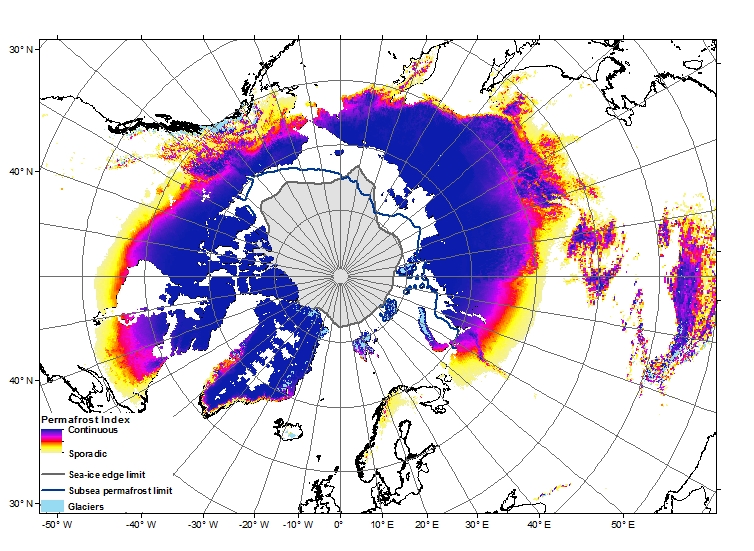Permafrost is soil or sediment that is permanently below zero °C
When most people talk about permafrost, they think of frozen, empty soil with very little living on it, in it or near it. They think of a harsh, icy environment with glaciers, blizzards and possibly a few reindeer roaming around. But permafrost is much more varied than this. It does not necessarily have a covering of ice, but can be a thin layer of grass or peat with frozen soil underneath it, there can even be forests growing on the surface with frozen soil underneath them. There can be animals living on it, and bacteria living within the sediment. In fact, the permafrost might not even be on land! Here are just a little information about permafrost and what it contains.

Permafrost soils, which are frozen so solid so you need a pneumatic drill to sample them, cover a quarter of the northern hemisphere land area, and can be up to 1500 m thick. They store more carbon than there is in the entire atmosphere. The very top layer will thaw each summer and freeze each winter, which allows plants to grow and animals to graze, but the lower parts remain frozen all the time. In the southern parts, there can be trees growing on top of the permafrost, this is known as the ‘taiga’. When it is too cold, and the growing season is too short, only grass, moss, shrubs and lichen can survive, this is the ‘tundra’.
Another example of permafrost is frozen methane-ice trapped on the seabed. Subsea permafrost is often ignored, but these icy crystals of frozen, flammable gas and water contain a large amount of trapped carbon, are prone to melting and gas release, and have been blamed for one of the most extreme climate events in geological history.
The last type of permafrost to be discussed here is ‘yedoma’. This is a feature of the very furthest reaches of the Arctic, and is formed by windblown dust freezing together to form a layer of dirty ice and sediment. These thick ice layers are often found on the Arctic coast, where they have no defences against the incoming waves from the Arctic Ocean and are eroded easily. As the Arctic warms, the sea ice that usually protects the coastline from the force of the waves is reduced to nothing, allowing the full power of the sea to erode into the shoreline
The map shown above can be downloaded here. The data was sourced from the University of Zurich Global Permafrost Zonation Index Map.
One thought on “What is: Permafrost?”